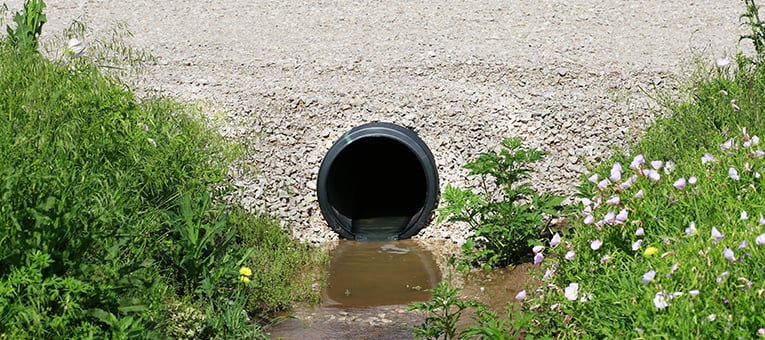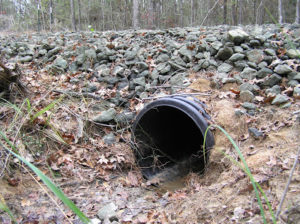Expert Culvert Installation for Resilient Facilities
Expert Culvert Installation for Resilient Facilities
Blog Article
Culvert Setup Facilitated: Step-by-Step Guide for Success
From choosing the proper culvert size to integrating correct drain steps, each step in the installation procedure plays a crucial function in the performance and longevity of the culvert system. Stay tuned to reveal the crucial steps and factors to consider that can make culvert setup a seamless and effective venture.
Selecting the Right Culvert Dimension
Choosing the appropriate culvert dimension is vital for making sure reliable water circulation and structural honesty in culvert setup projects - Pad Construction. The size of the culvert straight affects the circulation capability of water with the framework. A culvert that is too tiny can result in flooding and overflow, while one that is too big may result in reduced water velocity, possibly causing sediment build-up and obstructions
To determine the ideal culvert size, factors such as the watershed location, peak circulation prices, and hydraulic effectiveness requirement to be meticulously considered. Estimations based on these specifications aid in picking a dimension that can appropriately deal with the predicted water volume while reducing the danger of clogs and structural failure.
It is necessary to speak with engineering guidelines and requirements to make certain that the chosen culvert dimension fulfills the task requirements and regional guidelines (Pad Construction). By choosing the ideal culvert dimension, project managers can optimize water circulation, prevent potential problems, and improve the general efficiency and longevity of the culvert installment
Preparing the Installment Website
Efficient culvert installation demands thorough prep work of the installment website to ensure ideal structural assistance and functionality. Before commencing the installation process, it is crucial to clear the website of any kind of particles, vegetation, or blockages that might hinder the culvert's placement. Guaranteeing a level foundation is essential for the proper placement and security of the culvert. This might entail grading the website to develop a smooth, also surface that can sufficiently support the weight of the culvert and any kind of expected tons. Additionally, correct compaction of the dirt under the culvert is essential to protect against clearing up or moving in time.
Furthermore, it is necessary to take into consideration aspects such as dirt make-up, groundwater levels, and environmental effects when preparing the installment site. Conducting an extensive website analysis can help identify any kind of prospective obstacles or threats that may affect the culvert's performance. By putting in the time to prepare the installation site correctly, you can help ensure an effective culvert setup that satisfies site link architectural needs and makes certain lasting functionality.
Putting the Culvert Properly

The quality at which the culvert is placed is important for preserving a correct incline for water circulation. A gradual slope assists stop merging and advertises efficient drain. In addition, the culvert needs to be oriented appropriately to ensure that the inlet and outlet remain in the appropriate areas. This alignment is essential for the culvert to function effectively in managing water circulation.
Backfilling and Condensing the Soil
Proper backfilling and compaction of the dirt around the culvert is crucial to make certain security and stop potential problems in the future. Once the culvert is appropriately put, the next essential action is to backfill the area around it with suitable product. The backfill material need to be devoid of rocks, debris, and raw material to prevent damage to the culvert. It that site is advised to utilize granular product such as sand or crushed rock for backfilling, as it offers good water drainage and compaction residential properties.
After putting the backfill product, it is essential to portable it in layers of uniform density. Using a compactor or a mechanical tamper, small the soil delicately to avoid harming the culvert. Compaction aids in decreasing the possibilities of settlement and makes certain consistent support around the culvert. It is crucial to portable the soil evenly on all sides of the culvert to keep its structural stability.
Appropriate backfilling and compaction not just give security to the culvert but also help in stopping dirt disintegration and preserving the long life of the culvert system.
Making Certain Correct Drainage Integration
Integrating effective drainage solutions plays an important function in the general performance and durability of culvert setups. Appropriate drain integration is vital for handling water circulation, avoiding erosion, and making sure the structural integrity of the culvert system. To attain this, it is essential to make an extensive water drainage plan that considers aspects such as the quantity of water expected, the topography of the area, and the sort of dirt present.

Furthermore, integrating attributes like disintegration control measures, such as riprap or greenery, can better enhance the effectiveness of the drainage system. By very carefully preparing and applying these look at here water drainage services, culvert setups can work effectively and stand up to the examination of time.
Final Thought
In final thought, correct culvert setup is vital for preserving effective drain systems. By choosing the best culvert size, preparing the installation site, placing the culvert correctly, backfilling and condensing the dirt, and making sure appropriate drain assimilation, success can be achieved. Adhering to these actions will help ensure the long life and efficiency of the culvert, inevitably adding to the general success of the drainage system.
Report this page